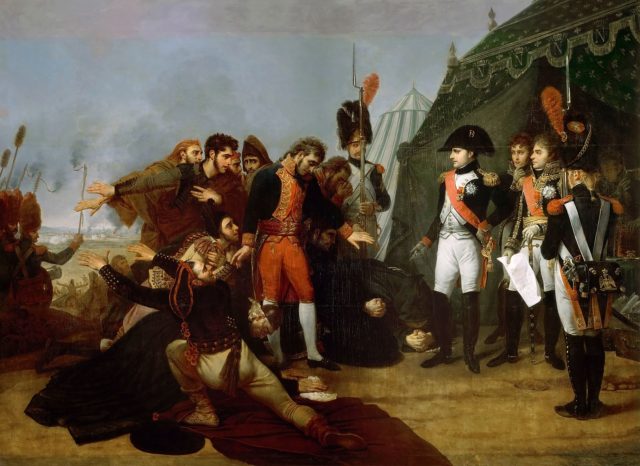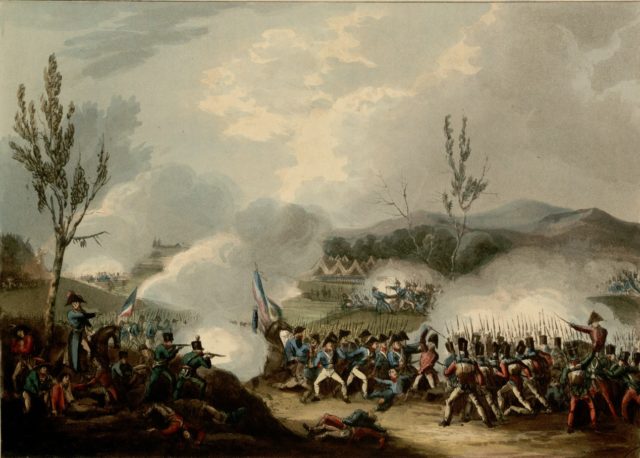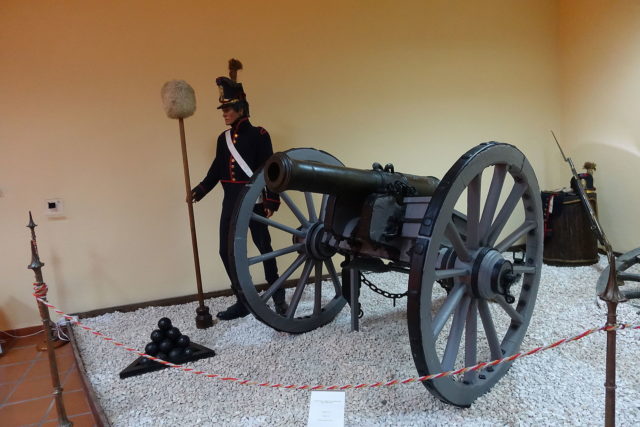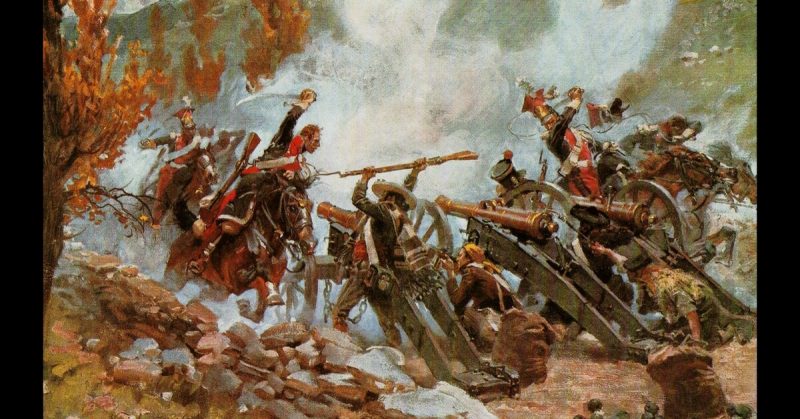The Peninsula War was one of the most drawn out and bloody of the Napoleonic Wars. Figures on the war help to shed light on this huge and arduous conflict.
7 Years
Seven years is how long there was fighting in Portugal and Spain after Napoleon sent in his troops. The whole campaign lasted from 1807 to 1814.
44 Days
Forty-four days was the length of the Cintra Inquiry. This investigation on behalf of the British government looked at failings by the British Army during its early involvement in the Peninsula War. Generals Dalrymple and Burrard were heavily criticized, losing face as well as power.
Sir Arthur Wellesley, the future Duke of Wellington, was among those recalled from the fighting to face the inquiry. Of the senior commanders investigated, he was the only one exonerated. It led to him being given command of the British troops in the Spanish Peninsula, where he would prove his gifts as a general and earn a dukedom.

2 Abdicating Kings
Both King Charles IV of Spain and his son and heir King Ferdinand VII were forced to abdicate by the French. France began its involvement in Spain on supposedly friendly terms and sent troops through Spain to invade Portugal. Resistance by some Spanish politicians led the French to seize direct power. Charles and Ferdinand were both ousted in 1808 and Napoleon’s brother was installed as King Joseph I.
65 British Infantry Regiments
Sixty-five regiments of the British infantry which provided soldiers over the course of the war. Starting with a defense of Portugal, it was Britain’s mainland campaign of the Napoleonic Wars. It shaped the British Army and many regiments still celebrate their achievements over two hundred years later.

84 French Infantry Regiments
At the start of the war, the entire French Army had 90 infantry regiments. By the end of the war, with France facing many enemies, there were 156. Of these, at least 84 fought in the Peninsula, a huge commitment for a nation that also fought Austria, Prussia, and Russia.
As with the British, the infantry made up the majority of the army, but there were also substantial elements of cavalry and artillery.
2 Months
Napoleon only spent two months commanding his forces in the Peninsula. He was present from November 3, 1808, to January 1, 1809.
Napoleon’s direct leadership was the most successful stage of the war for the French. When he left, they were in the ascendant.
His subsequent meddling became a problem. Unable to distinguish between large-scale strategy and excessive micro-management, he sent orders to the Peninsula based on information that was often outdated or incomplete.
Napoleon referred to the extended war as the “Spanish ulcer.” By the end, he regretted French intervention in the Peninsula, which had been a huge drain on manpower and resources.
100,700 Men
This was the approximate number of soldiers who took part in the Battle of Talavera on July 27 and 28, 1809.
It is difficult to provide exact figures for the battles in the Peninsula War, but most battles were smaller than this one and few were larger. The biggest confrontations usually saw around 100,000 men engaged even if more were theoretically present in the area.
70,563 Pieces of Shot and Shell
This was the amount of ammunition used by the British during the Siege of San Sebastian. Also, around 150 tons of gunpowder would have been needed to fire the guns.
19 Provinces
The campaign was fought across nineteen provinces; thirteen Spanish and six Portuguese. Many of these were the remnants of ancient kingdoms and principalities, with distinct senses of identity and tradition. Not all responded to the war in the same way, and within Spain, there were disputes over the role of different regional bodies in running the war.
6 Sieges
The number of sieges directed by the French General Joseph Rogniat as chief engineer of the Army of Aragon. One of France’s leading siege engineers, he commanded siege works in the Peninsula from December 1809 to January 1813, when he was called away to become chief engineer of the Grande Armé.
Sieges were important throughout the Peninsula campaign. Many of the highest casualties came when these actions ended with the defenses being stormed. It led to brutal and often merciless fighting.

5 Battalions of Artillery Train
Reliance on civilians to move their artillery caused problems for the Spanish during much of the war. In 1813, they solved this by creating five battalions of artillery train, ensuring the mobility of their guns. Later it was increased to six battalions.
4.8% to 39% Officer Casualties
Officers suffered a much lower casualty rate than ordinary soldiers. That said, the proportion of officers killed varied hugely from one action to another. The British lost around 4.8% of their officers who took the field at Busaco and a staggering 39% at Albuera.
1,748 Men Killed
This was the number of casualties at a sortie in Bayonne on April 14, 1814. General Pierre Thouvenot ordered the attack by French forces against British and Portuguese troops. He did so although the war was nearly over and the news was spreading across Europe of Napoleon’s abdication. Thouvenot was widely condemned as having caused a wasteful and pointless loss of life.
1828
1828 was the year W. F. P. Napier published his History of the War in the Peninsula and in the South of France from the Year 1807 to the Year 1814. It was the first great history of the Peninsula War. While far from flawless and the source of controversy, it established Napier as one of Britain’s great military historians.
Napier and his brothers had served in the Peninsula War which gave him first-hand knowledge of the campaign as well as various biases. One of his reasons for writing the book was to defend the reputation of his friend General Moore.
Source:
Philip Haythornthwaite (2004), The Peninsular War: The Complete Companion to the Iberian Campaigns 1807-14.
